

We don't have to travel across the globe to witness the many marvels of the world — those marvels are here, under our feet, down the path, and beyond the shore. Winifred & Spencer Kellogg Gallery: Wisconsin Journey will take visitors to six distinct areas of the state, each with its own subset of exhibits. We are excited to share a glimpse of some of the exhibits that will comprise: the Driftless Area, Prairie, Apostle Islands, and Northwoods. The final gallery will also include exhibits about the Great Lakes and Door Peninsula.
Visitors will get a look at the wealth of wonders the state of Wisconsin offers and its unique and dynamic natural and cultural landscapes. Throughout the gallery, visitors will experience the rich, diverse Indigenous cultures and histories that have shaped the collective knowledge and understanding of the state; we are working closely with tribes to gather and tell these stories.
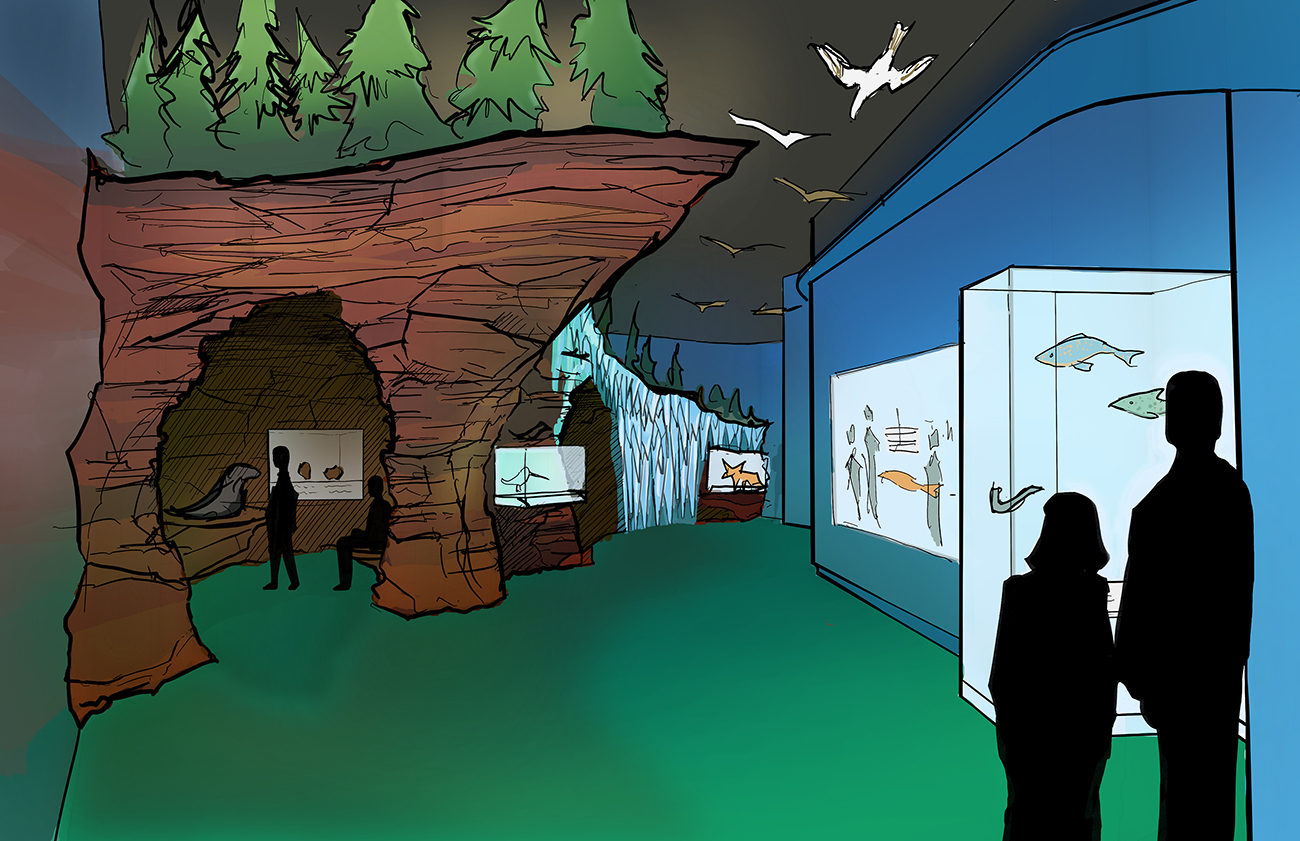
Apostle Islands
At the state's northernmost edge, the Apostle Islands are a beautiful natural sanctuary. Visitors are invited to escape to this uniquely dramatic landscape and explore this area's cross-cultural histories.
Devils Island
In the Future Museum, visitors will be able to witness the beauty of the Apostle Islands with immersive environmental elements that shift from summer to winter as they walk through the rocky caves of Devils Island.
Migratory Birds
Overhead, visitors will see on display a flock of migratory bird specimens from the collections, suspended as if in flight, demonstrating one way life in and around the state shifts across seasons and highlighting the many native specimens in the Museum's care. The story of migration will carry through all of Winifred & Spencer Kellogg Gallery: Wisconsin Journey, and visitors may notice more migratory birds soaring around other sections of the Future Museum, too.
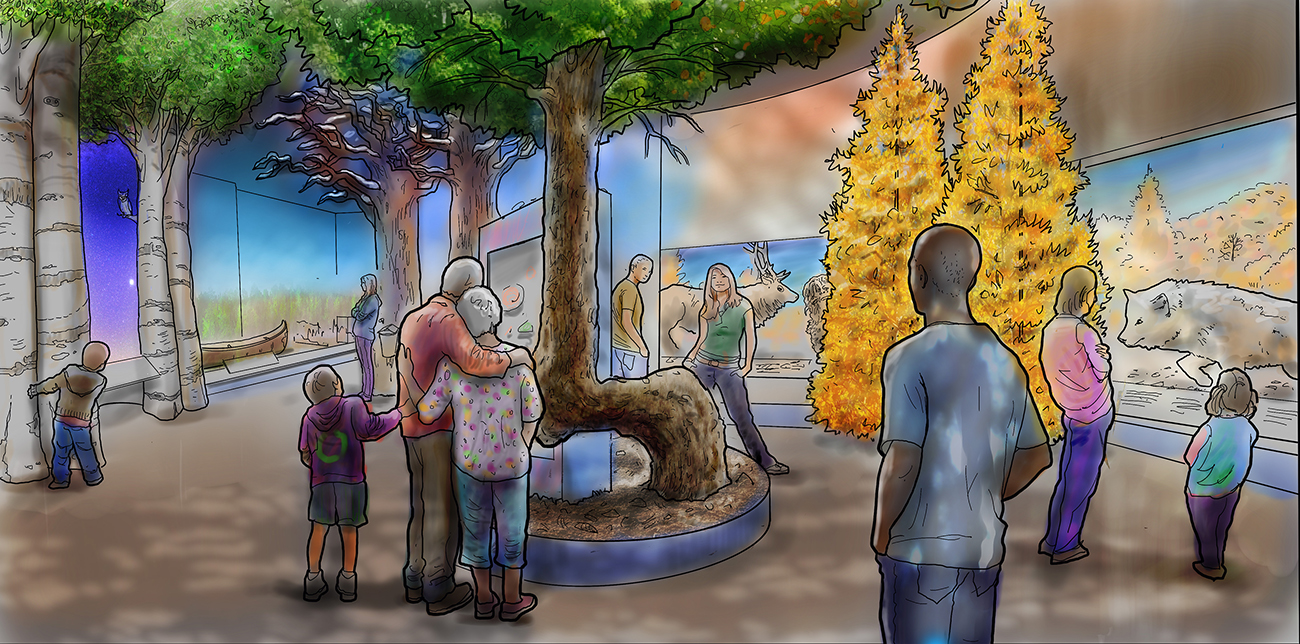
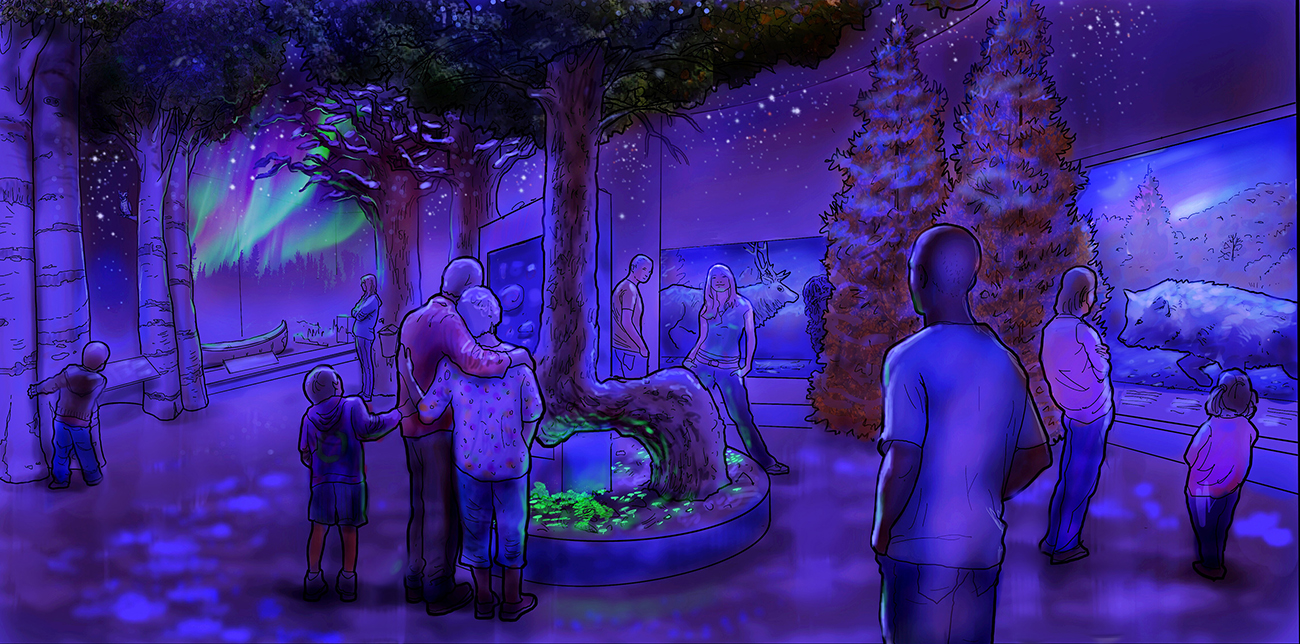
Northwoods
Hike “up north” through a rich, woodland landscape and discover the Northwoods. This region is a special place of wonder for so many Wisconsinites, and the exhibits in this area will explore what makes it so unique and memorable. Visitors will discover how the Northwoods changes over 24 hours and throughout the four seasons.
Natural Cycles
Choreographed lighting and soundscapes will shift the woodland space from day into night; stars will replace clouds, the hoot of an owl will replace bird song, and glow-in-the-dark mushrooms will appear on the ground. After a few minutes, “daylight” will return.
In addition to environmental transitions from day to night, the Northwoods will focus on Wisconsin's distinct seasons. For example, the honey bears visitors know from MPM will be on display in the Northwoods to help us learn about seasonal shifts and hibernation patterns. The trees—birch, maple, and tamarac—will also capture the changes over a year's time, whether covered in blossoms for spring, thick foliage for summer, bright autumnal yellows and oranges, or bare, snow-crusted branches.
This gallery will demonstrate the landscapes and plant, animal, and human communities that make the region such a distinct place. The communities and individuals who best know the Northwoods will be highlighted through unique stories and memories, including those of traditions like wild ricing, maple-tapping, ice fishing, and foraging.
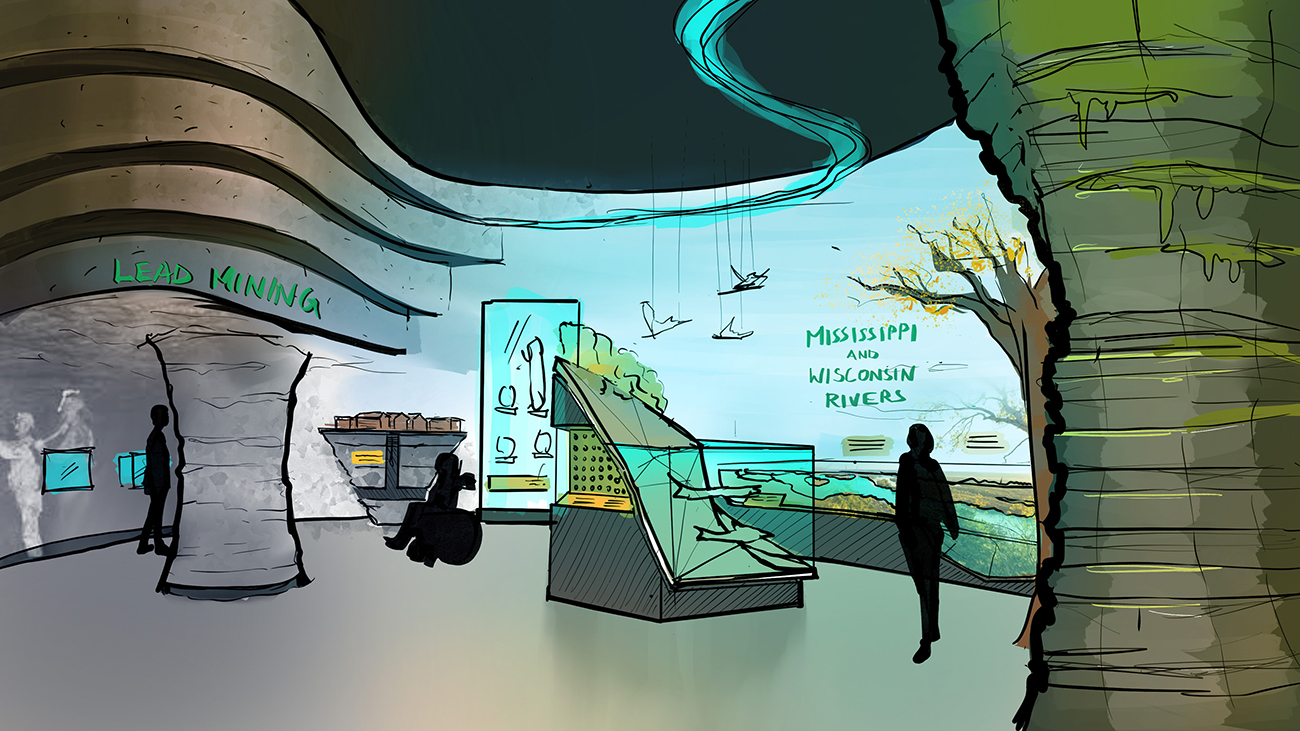
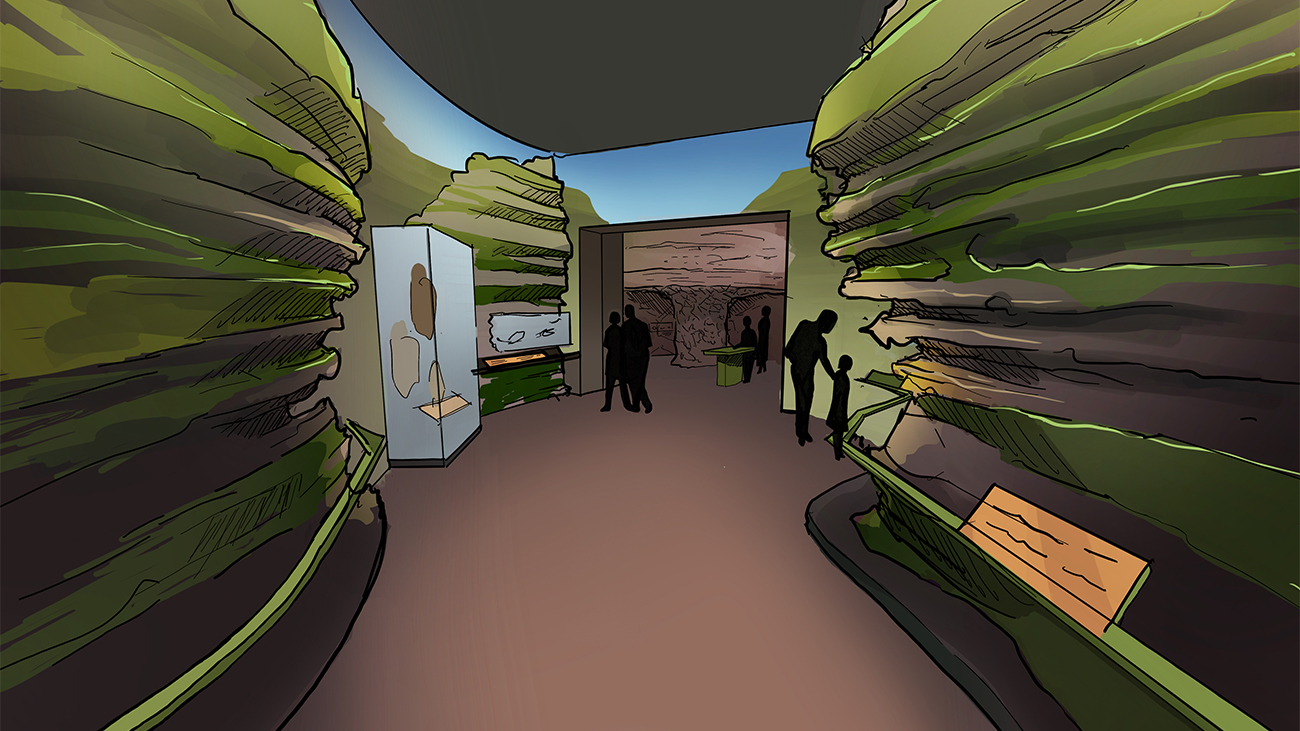
Driftless
Untouched by the grinding glaciers that shaped the rest of the state, Wisconsin's Driftless region is evidence of an ancient state that continues to be reshaped by its diverse inhabitants, old and new. In Winifred & Spencer Kellogg Gallery: Wisconsin Journey's Driftless area, visitors will explore the region's unique geological history and the ways in which the land has shaped Wisconsinites and industry — particularly lead mining.
Waterways
Wisconsin is celebrated for its lakes, but the state's vast system of rivers have played an equally important role in the region's ecological and cultural history. Visitors will be able to explore waterways through a tactile map of Wisconsin's most significant rivers, the Mississippi and Wisconsin, to better understand how the region's watery highways have connected people to the land, and to each other, for millennia. Alongside displays about human control of the rivers' paths, visitors will encounter MPM's famous beaver den and explore how the beaver may be one of the most controversial teachers when it comes to flood prevention and sustainable water management practices.
Wisconsin Dells
Another popular destination within the Driftless Area is the Wisconsin Dells, known for its distinctive Cambrian sandstone formations. Visitors will explore this unique geological history, including how the many characteristic features of this landscape were shaped and why the Dells has been such a special place for Wisconsinites throughout the ages.
Lead Mine
Visitors will learn why Wisconsin is known as the Badger State—not after the animals, but for the 19th-century miners that lived in dens dug into the hillsides, reminiscent of badgers' burrows. The immersive exhibit will make visitors feel like they are in a dark lead mine, telling the stories of galena, one of the country's first “rushes,” and Indigenous mining, as a way to illustrate the strong connection between the state's unique nature, the culture, and practices that developed in response to the land and how the two interact and impact one another.
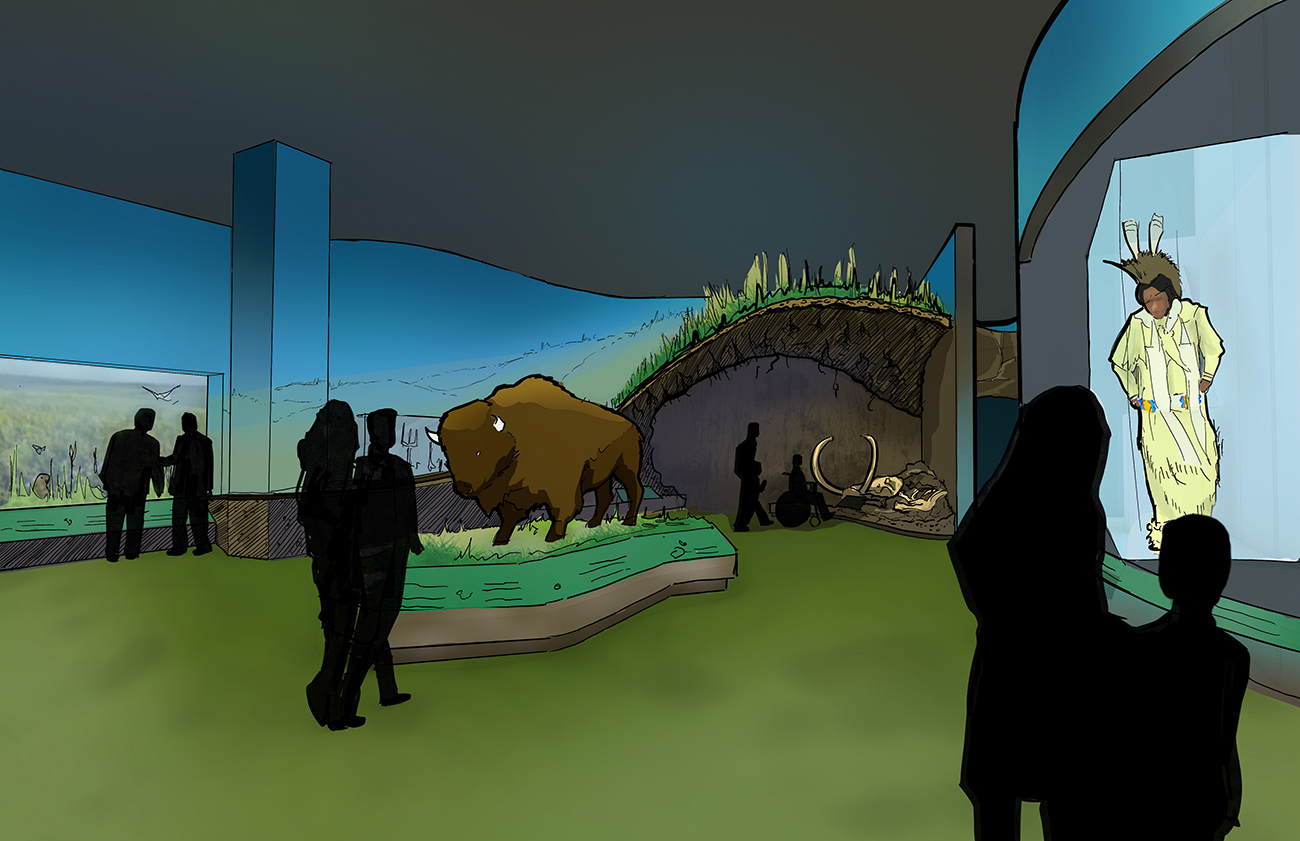
Prairie
Wisconsin is known for its vast prairielands. In the Prairie, visitors will find out what makes this landscape, both above and below ground, so verdant, resilient, and attractive to those who have cultivated the land and made it an agricultural force.
Prairieland Bison Display
At the forefront of Prairie, visitors will encounter a bison (also referred to as an American buffalo) exhibit featuring a specimen currently on display at MPM and learn about the animal's role as a keystone species—including how that role has changed over time, Indigenous connections, extirpation of the species in Wisconsin, and ongoing restoration efforts.
Hebior Mammoth Dig Site
The story of the Hebior Mammoth will carry through from the Time Travel gallery all the way to the Prairie, offering visitors multiple perspectives on one of the Museum's most significant specimens. This immersive scene peels up the ground to give us insight on how the giant mammoth bones emerged from the dirt—as if just discovered by John Hebior in Kenosha County, Wisconsin. By analyzing marks on the bones, scientists have determined the animal was alive alongside its human butchers about 14,500 years ago — proving humans were in Wisconsin 1,000 years earlier than was previously thought. Through the context of the dig, visitors can unearth stories about the Ice Age, mammoth migration, and the roots and soil beneath us. The cast of the 14,500-year-old skeleton will also be touchable, making this experience all-the-more memorable.
Other exhibits in Prairie will demonstrate how humans have impacted Wisconsin's prairies, how the landscape supports humans, and how prairie inhabitants work together to create a community. Visitors will learn about European immigrants' agricultural knowledge and practices.
On display will be a contemporary Grass Dancer powwow outfit from MPM's collections along with a video of the Grass Dance being performed. First-person descriptions of the Grass Dance's importance in certain Indigenous traditions will also be shared.
Associated Bank
Gathering and Education Space
The Associated Bank Gathering and Education Space, made possible by a generous $1M donation from Associated Bank, will be located at the Winifred & Spencer Kellogg Gallery: Wisconsin Journey entrance and support special programming and interactive learning experiences connected to the gallery's theme. Each of the Future Museum's five permanent galleries will include a similar entrance area for gathering and programming.

